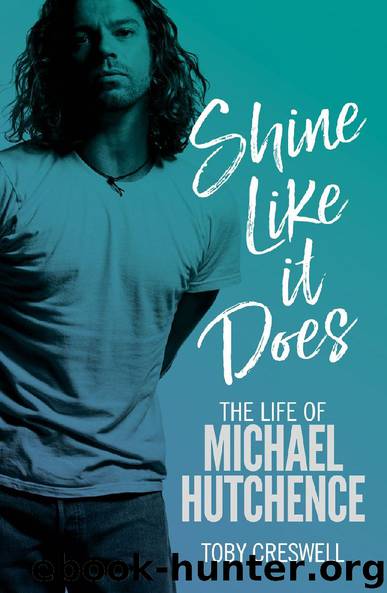Shine Like It Does by Toby Creswell

Author:Toby Creswell
Language: eng
Format: epub
Tags: biography, Australia, rock music, music, Michael Hutchence, Andrew Farriss, Jon Farriss, Tim Farriss, Sydney, Melbourne, suicide, Kylie Minogue, Paula Yates, Bob Geldof, Shabooh Shobaah, Suicide Blonde, Kick, Oasis, Wembley Stadium, guitar, Toby Creswell
ISBN: 9781760407360
Publisher: Echo
Published: 2017-09-24T00:38:05+00:00
10
Money changes everything
Like the song says …
In the 1980s, record sales were an important source of income. The band owned their recordings from Shabooh Shoobah onwards and they licensed the master recordings to the various companies for release in different territories.
Typically a deal for each record would involve the record company advancing funds to pay for recording, touring and marketing, and those advances were recouped from sales before the band got a drink. Unrecouped advances were usually rolled over to the next project so it was very common for an artist to have a massive hit album and receive little or no royalties from it.
In the mid-1980s, a group like INXS would expect to spend about $300,000 on videos; the cost of recording, including producer Chris Thomas, would be maybe $250,000; and about $250,000 for other costs the label could attach to the project would be deducted. Therefore, if the album sold three million copies, as Kick did initially, INXS had $3 million to pay out recouped balances to their record companies, as well as management fees of $600,000, and they could keep the rest.
According to Philip Mortlock, ‘The income streams were varied and grew substantially across The Swing and Listen Like Thieves before Kick. Touring became the biggest source of profit for the band. The year-long world tour for Kick was the big payoff. That said, lots of touring around the previous albums would have been very lucrative as well. There were few territories where they couldn’t tour and make profit. MMA took their 20 per cent [commission] of everything along the way. That is why CM became such a success. He had the best share of it all, considering the rest was split between six others.’
A record has two copyrights that earn royalties. One is the artist’s performance on a record, which is paid by the record company to the artist after costs have been recouped. The other copyright is in the song, and is paid to the songwriters personally, usually without any advances having to be recouped. Publishing income is the most lucrative part of the music business and is generally divided disproportionately in a band. To be blunt, Andrew and Michael as the songwriters became far, far more wealthy than Garry or Tim. I believe that INXS did have a system, though, where 50 per cent of the publishing went to the writers and 50 per cent was split among the others.
Each copyright, based on average royalty rates at the time, would have netted the band one dollar per album for their performance and one dollar per album split among the songwriters. Once the carried-forward costs had all been recouped, the musicians started to make real money. It didn’t come all at once but it did eventually come.
Then there were the other income streams – merchandise from T-shirts, key rings and all manner of goods; there were fees for the use of songs on compilations (
Download
This site does not store any files on its server. We only index and link to content provided by other sites. Please contact the content providers to delete copyright contents if any and email us, we'll remove relevant links or contents immediately.
| Classical | Country & Folk |
| Heavy Metal | Jazz |
| Pop | Punk |
| Rap & Hip-Hop | Rhythm & Blues |
| Rock |
Cecilia; Or, Memoirs of an Heiress — Volume 2 by Fanny Burney(31909)
Cecilia; Or, Memoirs of an Heiress — Volume 3 by Fanny Burney(31892)
Fanny Burney by Claire Harman(26560)
We're Going to Need More Wine by Gabrielle Union(19003)
Plagued by Fire by Paul Hendrickson(17370)
All the Missing Girls by Megan Miranda(15774)
Cat's cradle by Kurt Vonnegut(15257)
Bombshells: Glamour Girls of a Lifetime by Sullivan Steve(14020)
For the Love of Europe by Rick Steves(13558)
Leonardo da Vinci by Walter Isaacson(13235)
4 3 2 1: A Novel by Paul Auster(12329)
The remains of the day by Kazuo Ishiguro(8890)
Adultolescence by Gabbie Hanna(8887)
Note to Self by Connor Franta(7645)
Diary of a Player by Brad Paisley(7520)
Giovanni's Room by James Baldwin(7250)
What Does This Button Do? by Bruce Dickinson(6168)
Ego Is the Enemy by Ryan Holiday(5347)
Born a Crime by Trevor Noah(5334)
